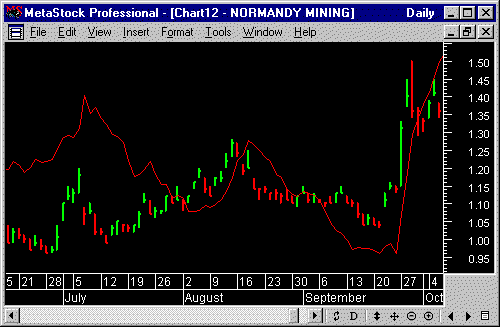|
Commodity Channel Index

Description
The
Commodity Channel Index (CCI) is
calculated by first determining the
difference between the mean price of a
commodity and the average of the means
over the time period chosen. This
difference is then compared to the
average difference over the time period
(this factors in the commodity's own
inherent volatility). The result is then
multiplied by a constant that is
designed to adjust the CCI so that it
fits into a "normal" trading range of
+/-100.
A complete
explanation of the CCI is beyond the
scope of the manual. Further details on
the contents and interpretation of the
CCI can be found in the October 1980
issue of Commodities magazine
(now known as Futures). The
article was written by Donald Lambert.
Interpretation
While the
CCI was originally designed for
commodities, the indicator also works
very well with stocks and mutual funds.
There are
two methods of interpreting the CCI:
-
Looking for divergences
A popular method of analyzing
the CCI is to look for divergences
in which the underlying security is
making new highs while the CCI is
failing to surpass its previous
highs. This classic divergence is
usually followed by a correction in
the security's price.
-
As
an overbought/oversold indicator
The CCI usually oscillates between
+/-100. Readings outside these
ranges imply an overbought/oversold
condition.
|